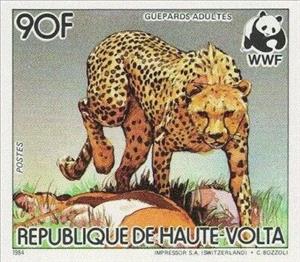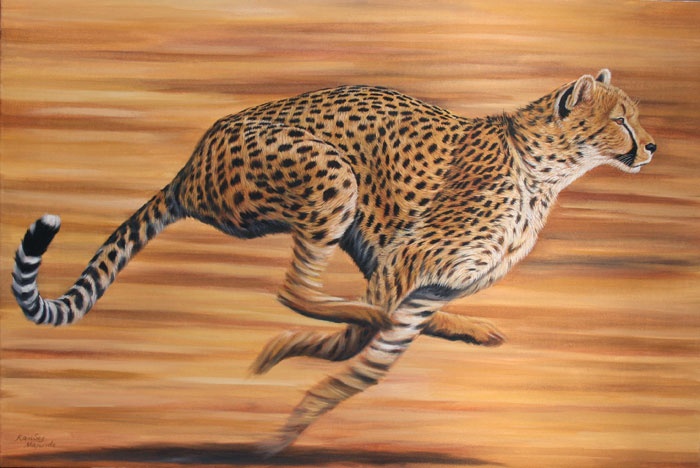Mini Sheet: Cheetah (Acinonyx jubatus) (Upper Volta 1984)
Cheetah (Acinonyx jubatus) (Upper Volta 1984)
19 July (Upper Volta ) within release WWF Nature Protection goes into circulation Mini Sheet Cheetah (Acinonyx jubatus) face value 90 West African CFA franc
| Mini Sheet Cheetah (Acinonyx jubatus) in catalogues | |
|---|---|
| Michel: | Mi: BF 959B |
Mini Sheet is square format.
Also in the issue WWF Nature Protection:
- Mini Sheet - Cheetah (Acinonyx jubatus) face value 260;
- Mini Sheet - Cheetah (Acinonyx jubatus) face value 260;
- Mini Sheet - Cheetah (Acinonyx jubatus) face value 15;
- Mini Sheet - Cheetah (Acinonyx jubatus) face value 35;
- Mini Sheet - Cheetah (Acinonyx jubatus) face value 90;
- Mini Sheet - Cheetah (Acinonyx jubatus) face value 120;
- Souvenir Sheet - Cheetah (Acinonyx jubatus) face value 15;
- Souvenir Sheet - Cheetah (Acinonyx jubatus) face value 35;
- Souvenir Sheet - Cheetah (Acinonyx jubatus) face value 90;
- Souvenir Sheet - Cheetah (Acinonyx jubatus) face value 120;
Mini Sheet Cheetah (Acinonyx jubatus) it reflects the thematic directions:
Animals are multicellular, eukaryotic organisms of the kingdom Animalia (also called Metazoa). All animals are motile, meaning they can move spontaneously and independently, at some point in their lives. Their body plan eventually becomes fixed as they develop, although some undergo a process of metamorphosis later on in their lives. All animals are heterotrophs: they must ingest other organisms or their products for sustenance.
The cheetah (Acinonyx jubatus) is a large cat and the fastest land animal. It has a tawny to creamy white or pale buff fur that is marked with evenly spaced, solid black spots. The head is small and rounded, with a short snout and black tear-like facial streaks. It reaches 67–94 cm (26–37 in) at the shoulder, and the head-and-body length is between 1.1 and 1.5 m (3 ft 7 in and 4 ft 11 in). Adults weigh between 21 and 72 kg (46 and 159 lb). The cheetah is capable of running at 93 to 104 km/h (58 to 65 mph); it has evolved specialized adaptations for speed, including a light build, long thin legs and a long tail.
Mammals are any vertebrates within the class Mammalia (/məˈmeɪli.ə/ from Latin mamma "breast"), a clade of endothermic amniotes distinguished from reptiles (including birds) by the possession of a neocortex (a region of the brain), hair, three middle ear bones and mammary glands. All female mammals nurse their young with milk, secreted from the mammary glands. Mammals include the largest animals on the planet, the great whales. The basic body type is a terrestrial quadruped, but some mammals are adapted for life at sea, in the air, in trees, underground or on two legs. The largest group of mammals, the placentals, have a placenta, which enables the feeding of the fetus during gestation. Mammals range in size from the 30–40 mm (1.2–1.6 in) bumblebee bat to the 30-meter (98 ft) blue whale. With the exception of the five species of monotreme (egg-laying mammals), all modern mammals give birth to live young. Most mammals, including the six most species-rich orders, belong to the placental group. The largest orders are the rodents, bats and Soricomorpha (shrews and allies). The next three biggest orders, depending on the biological classification scheme used, are the Primates (apes and monkeys), the Cetartiodactyla (whales and even-toed ungulates), and the Carnivora (cats, dogs, seals, and allies).



